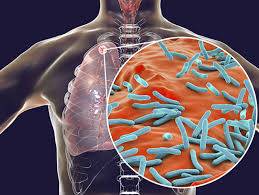Certainly, here are 20 potential causes, signs or symptoms, effects, and solutions related to Tuberculosis (TB):
**Causes of Tuberculosis:**
1. **Mycobacterium tuberculosis:** TB is primarily caused by this bacterium.
2. **Close Contact:** Exposure to an active TB case.
3. **Weakened Immune System:** HIV/AIDS, immunosuppressive medications.
4. **Overcrowded Living Conditions:** Higher risk in crowded areas.
5. **Malnutrition:** Weakened immune system due to poor nutrition.
6. **Alcohol and Substance Abuse:** Increases vulnerability.
7. **Healthcare Settings:** Inadequate infection control in hospitals.
8. **Age:** Higher risk for young children and the elderly.
9. **Diabetes:** Increases susceptibility to TB.
10. **Smoking:** Can weaken the respiratory system.
11. **Travel to High-Incidence Areas:** Especially in countries with high TB rates.
12. **Silicosis:** A lung disease caused by inhaling silica dust.
13. **Renal Failure:** Impaired kidney function can increase risk.
14. **Chronic Lung Disease:** Like chronic obstructive pulmonary disease (COPD).
15. **Prisons:** TB transmission can be higher in correctional facilities.
16. **IV Drug Use:** Sharing needles can transmit the bacteria.
17. **Homelessness:** Lack of access to healthcare and crowded shelters.
18. **Refugee Camps:** Congested living conditions in camps.
19. **Immigration:** Migrants from high TB burden areas.
20. **Elderly Care Facilities:** Close living quarters among residents.
**Signs and Symptoms of Tuberculosis:**
1. **Persistent Cough:** For more than 3 weeks.
2. **Coughing up Blood:** Hemoptysis.
3. **Chest Pain:** Often pleuritic (pain with deep breaths).
4. **Fatigue:** Generalized tiredness.
5. **Fever:** Especially in the evening.
6. **Night Sweats:** Drenching sweats during sleep.
7. **Unexplained Weight Loss:** Significant and unintentional.
8. **Loss of Appetite:** Anorexia.
9. **Shortness of Breath:** Especially with physical activity.
10. **Swollen Lymph Nodes:** In the neck or elsewhere.
11. **Weakness:** Loss of physical strength.
12. **Joint Pain:** In some cases.
13. **Headaches:** Especially if related to meningitis.
14. **Nausea and Vomiting:** May occur in severe cases.
15. **Abdominal Pain:** From TB affecting the abdomen.
16. **Confusion:** In cases of TB meningitis.
17. **Muscle Pain:** Especially with advanced disease.
18. **Pleural Effusion:** Accumulation of fluid around the lungs.
19. **Difficulty Swallowing:** Dysphagia.
20. **Hoarseness:** Changes in the voice.
**Effects of Tuberculosis:**
1. **Lung Damage:** Tuberculosis can cause scarring and lung cavities.
2. **Tuberculous Meningitis:** Infection of the membranes covering the brain.
3. **Spinal Tuberculosis:** Can lead to spinal deformities.
4. **Joint Tuberculosis:** Affecting the joints, known as Pott's disease.
5. **Bone Tuberculosis:** Can cause bone destruction.
6. **Kidney Tuberculosis:** Renal damage and dysfunction.
7. **Liver Tuberculosis:** Hepatic involvement.
8. **Gastrointestinal TB:** Affects the digestive system.
9. **Disseminated TB:** TB bacteria spread throughout the body.
10. **Respiratory Failure:** In severe cases.
11. **Pneumothorax:** Lung collapse due to cavities.
12. **Heart Damage:** Tuberculosis can affect the heart lining.
13. **Infertility:** In men, genital TB can lead to infertility.
14. **Stunted Growth:** In children with TB.
15. **Blindness:** Ocular TB can damage the eyes.
16. **Secondary Infections:** Increased risk of other infections.
17. **Psychological Impact:** Anxiety and depression.
18. **Social Isolation:** Due to fear of contagion.
19. **Economic Impact:** Lost productivity and healthcare costs.
20. **Death:** Tuberculosis can be fatal, especially if untreated.
**Solutions for Tuberculosis:**
1. **Medications:** TB is treatable with a combination of antibiotics.
2. **Directly Observed Therapy (DOT):** Ensures patients take medications as prescribed.
3. **Isolation:** In some cases, isolation to prevent transmission.
4. **Contact Tracing:** Identifying and testing individuals in close contact with TB patients.
5. **Vaccination:** BCG vaccine for infants in high-risk areas.
6. **Smoking Cessation:** Reduces the risk of TB progression.
7. **Nutritional Support:** Ensure a balanced diet for better immune function.
8. **Preventive Therapy:** For individuals at high risk of TB.
9. **Education:** Promote awareness and prevention.
10. **Viral Load Suppression:** For HIV-positive individuals.
11. **Infection Control:** In healthcare settings to prevent transmission.
12. **Respiratory Hygiene:** Covering the mouth when coughing or sneezing.
13. **Treatment Adherence:** Ensure patients complete their full course of TB medication.
14. **Screening and Testing:** Early detection and treatment.
15. **Safe Injection Practices:** Avoid sharing needles.
16. **Environmental Control:** Reducing exposure to known risks.
17. **Community Outreach:** To reach high-risk populations.
18. **Mental Health Support:** For patients dealing with TB.
19. **Advocacy:** For funding and resources for TB prevention and treatment.
20. **International Collaboration:** To control TB globally.


